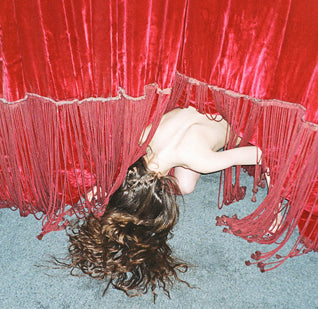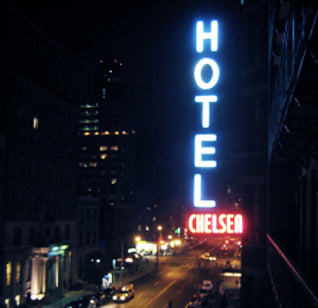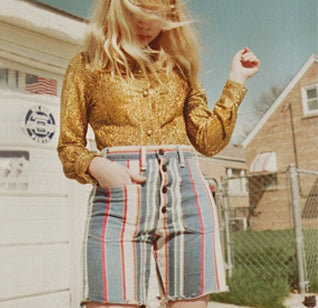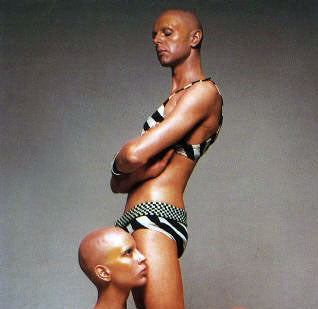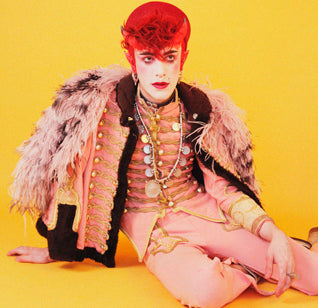BRITISH ARTIST RICHARD HAMILTON CREATED POP-ART
The paradox of a of kitsh, high art and politics
by Maria Raposo
While Hamilton hasn't received the same public attention as his more successful American contemporaries, in academic circles, he was considered one of the most influential artists of the 20th century. He coined the term “Pop Art,” worked with Marcel Duchamp and designed the Beatles white album. A shy artistic chameleon, he never shrank from political themes. Hamilton was a trickster and the first to integrate high and low culture; mixing kitsh into fine art to parody the consumerist culture and those with ‘cultivated tastes’.

Richard Hamilton with Sign, Carafe and Ashtray. He produced a series of functional objects stamped with a "Richard" logo, including this ashtray and carafe.

Richard Hamilton: Just What is it that Makes Today's Homes So Different, So Appealing? (1956)
When the Independent Group, as it was known, organized the groundbreaking exhibition “This Is Tomorrow” at the Whitechapel Gallery in 1956, Hamilton contributed a 10-inch-by-9-inch collage “Just What Is It That Makes Today’s Homes So Different, So Appealing?”. The work became one of his most famous collages, often referred to as the first example of Pop Art.

Richard Hamilton: Swingeing London '67 (1968–9)
One of the artist's most famous works was “Swinging London 67”, a series of prints depicting Mick Jagger's court case for possession of illegal drugs. The other figure in the work is Robert Fraser, Hamilton's art dealer. Both were convicted after the scandal. In a blurred haze, the image shows the crack down on liberal behaviour of the 1960’s. Around this time Hamilton met Paul McCartney who asked him to create the iconic “White Album” for the Beatles.

Richard Hamilton: Shock and Awe, (2008) (Detail)
Hamilton produced “Shock and Awe” 2008 after he became angry watching Tony Blair looking ‘smug’ following a conference with US president George Bush. Here he presents Blair as a middle-aged maverick cowboy ready for a shoot-out.

Richard Hamilton: The Citizen (1981-3)
Concerned by the troubles in Northern Ireland, Hamilton also produced three diptych paintings in the 1980s. He created the piece after seeing the television show ‘World in Action’ and Newsnight films showing IRA prisoners taking part in the ‘no wash’ protest. The Citizen”, considered one of Hamilton’s most poignant paintings, depicts the hunger strike of Bobby Sands surrounded by faeces - Hamilton glorifies him as Jesus Christ.

Richard Hamilton: Readymade Shadows, (2005-06)
‘Ready-Made Shadows’ 2005 was a tribute to long time inspiration and friend, Marcel Duchamp. Taking the Dada master’s readymades, he photographed the shadows they cast to imply their movement. Hamilton directly bridged the gap between DADA and Pop Art; unlike his contemporaries, he had a deep appreciation of modern art, but chose to take modern issues as his subject matter.

Richard Hamilton: Hers Is A Lush Situation, (1958)
The artist created a series inspired by automobile design. Hamilton highlighted the parallels between the body of a car, in this case a 1957 Buick, and the female form. He considered the links between design and eroticism as "the rhetoric of persuasion".

Richard Hamilton: Modern Moral Matters Treatment room, (1983-84)
Hamilton was a multidisciplinary artist who created provocative installations. The Treatment Room contains a hospital bed, a sink with disinfectant, a reinforced glass window and an environmental control panel. Instead of a doctor a TV plays speeches of Margaret Thatcher as a commentary on the governing powers at the time.












